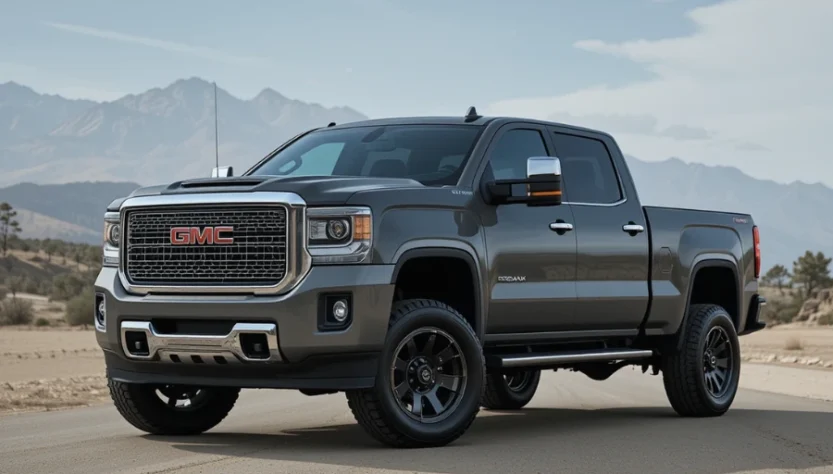The automotive world is constantly evolving, with manufacturers innovating to enhance performance, efficiency, and sustainability. Among the most anticipated developments is the GM 4.5L Duramax V8 prototype, a potential game-changer in the diesel engine segment. This article delves into the details of this prototype, exploring its design, anticipated features, technological advancements, and its implications for the future of diesel engines.
Introduction to the GM 4.5L Duramax V8 Prototype
General Motors’ dedication to improving diesel technology is exemplified by the 4.5L Duramax V8 prototype. This engine is believed to be a part of GM’s strategic plan to replace or supplement existing diesel powertrains in trucks and commercial vehicles. With rumors swirling around automakers’ push toward more efficient and environmentally friendly engines, the GM 4.5L Duramax V8 prototype stands out as a promising option that combines power, reliability, and efficiency.
Design and Engineering of the GM 4.5L Duramax V8 Prototype
Although specific details are still under wraps, industry insiders suggest that the GM 4.5L Duramax V8 prototype is designed with a focus on lightweight construction and advanced materials. The engine likely features a compact and optimized design to maximize performance while minimizing weight, which is crucial for improving fuel economy and handling.
One of the key engineering aspects of this prototype involves the use of high-strength aluminum alloys for the cylinder heads and block, reducing overall mass without sacrificing durability. The engine is also expected to incorporate advanced fuel injection technology, such as common rail direct injection, to improve combustion efficiency and power output.
Performance Expectations and Power Output
While official horsepower and torque figures for the GM 4.5L Duramax V8 prototype are yet to be confirmed, industry predictions suggest that it could deliver around 300-350 horsepower and 600-700 lb-ft of torque. These estimates place the engine in a competitive position within the diesel segment, especially considering its smaller displacement compared to traditional larger diesel V8s.
The anticipated performance metrics indicate that the GM 4.5L Duramax V8 prototype will be well-suited for heavy-duty applications, including pickup trucks, commercial vehicles, and possibly even larger SUVs. Its powertrain is expected to provide excellent towing capacity, acceleration, and overall reliability, making it an attractive option for drivers needing both grunt and efficiency.
Advancements in Technology in the GM 4.5L Duramax V8 Prototype
One of the standout features of the GM 4.5L Duramax V8 prototype is the integration of cutting-edge technology aimed at reducing emissions and improving fuel economy. For instance, the engine is likely equipped with advanced exhaust gas recirculation (EGR), selective catalytic reduction (SCR), and particulate filtration systems.
Furthermore, the prototype could also incorporate variable valve timing, turbocharging, and sophisticated engine control units (ECUs) to optimize performance across various driving conditions. The combination of these technologies not only boosts efficiency but also ensures compliance with increasingly stringent emissions regulations globally.
Fuel Efficiency and Environmental Impact
The automotive industry’s shift toward greener solutions has put significant pressure on diesel engine developers to reduce emissions without compromising performance. The GM 4.5L Duramax V8 prototype aims to strike this balance effectively.
Thanks to its smaller displacement, advanced fuel injection, and emissions control systems, this engine could offer significant improvements in fuel economy compared to larger diesel V8s. In real-world driving, it might provide a mix of power and efficiency that appeals to commercial operators and consumers alike.
This effort aligns with global initiatives to lower carbon footprints and reduce reliance on fossil fuels. The GM 4.5L Duramax V8 prototype could therefore play a vital role in the transition toward more sustainable diesel options.
Future Prospects and Market Impact
The introduction of the GM 4.5L Duramax V8 prototype is poised to impact the commercial and consumer vehicle markets significantly. If GM proceeds with production, this engine could replace older, larger diesel engines, offering a more modern and eco-friendly alternative.
Manufacturers often introduce prototypes as a testing ground for new ideas and technologies. The success of the GM 4.5L Duramax V8 prototype could pave the way for further innovations in diesel powertrains and perhaps inspire other automakers to develop similar smaller, more efficient V8 engines.
Additionally, this engine could strengthen GM’s position in the competitive truck and commercial vehicle markets, where power, reliability, and efficiency are critical factors for buyers.
Challenges and Developmental Considerations
Despite the promising outlook, the GM 4.5L Duramax V8 prototype faces some challenges. Developing a smaller V8 that maintains the robustness and durability expected from a diesel engine involves complex engineering feats. Issues such as cooling, lubrication, and durability testing are essential to ensure the engine’s longevity and reliability.
Environmental regulations continue to tighten, demanding further advancements in emissions control, which can increase development costs. Moreover, consumer perceptions of diesel engines, especially amidst rising electric vehicle adoption, will influence the engine’s market acceptance.
Conclusion: The Road Ahead for GM’s 4.5L Duramax V8 Prototype
The GM 4.5L Duramax V8 prototype stands as an exciting glimpse into the future of diesel engine technology. With its promising performance, innovative design, and environmental considerations, this engine could reshape how we perceive small V8 diesel powertrains.
As GM continues to refine and test this prototype, industry watchers eagerly anticipate its potential release. If successful, the GM 4.5L Duramax V8 prototype could become a benchmark for efficient, powerful, and clean diesel engines, securing GM’s position as a leader in the evolving automotive landscape.
